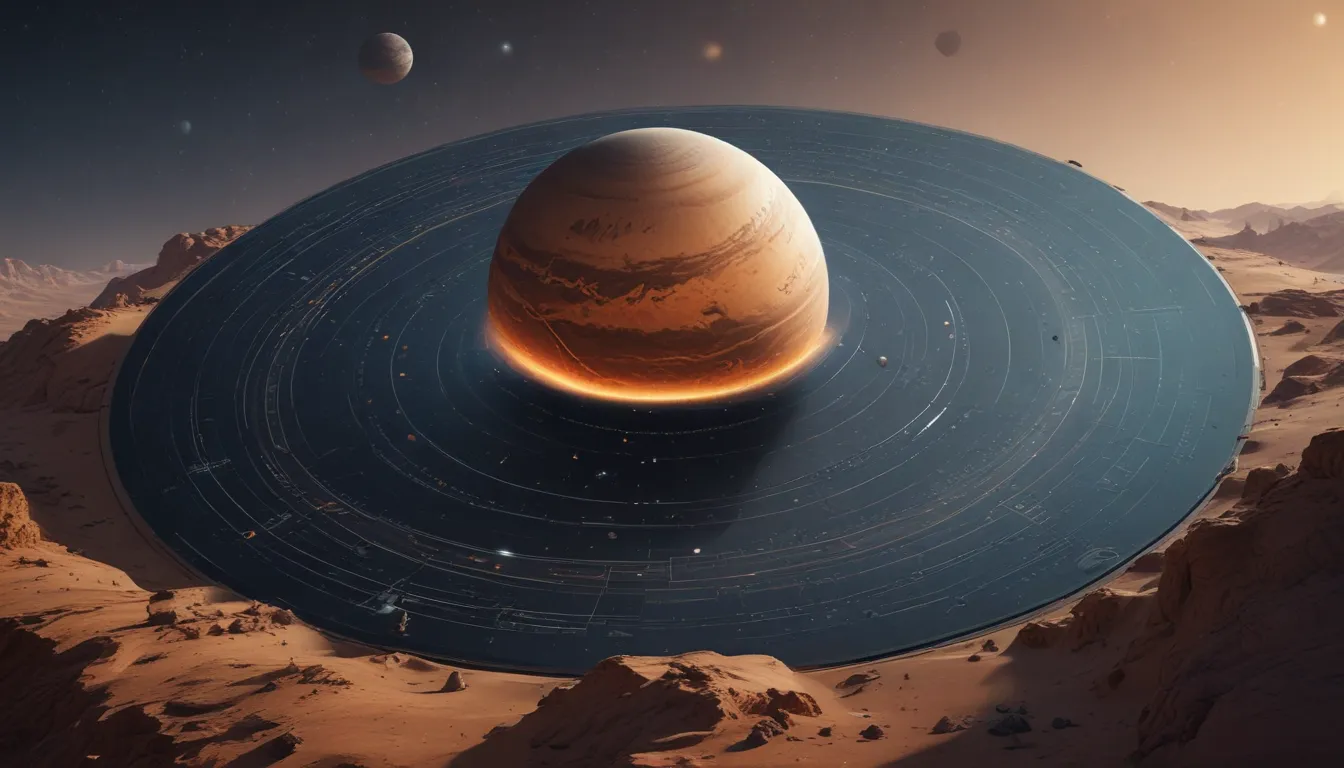The pictures we use in our articles might not show exactly what the words say. We choose these pictures to make you interested in reading more. The pictures work together with the words but don’t take their place. The words still tell you the important facts.
In the vast expanse of the universe, there are countless celestial bodies that remain shrouded in mystery. Fortunately, advances in technology have allowed us to delve deeper into the secrets of these planets, moons, and asteroids. Planetary radar mapping has emerged as a powerful tool that enables scientists to gather precise and detailed information about these celestial objects. Through the use of radar technology, scientists have been able to gather detailed data and create spectacular maps of various celestial bodies, revealing hidden features on planetary surfaces, discovering new asteroids, and aiding space exploration missions.
Unveiling the Universe with Radar Technology
Planetary radar mapping uses radio waves to uncover hidden features of planets, asteroids, and even Earth's atmosphere, helping scientists understand the universe beyond what we can see with our eyes. By bouncing radar signals off celestial bodies, scientists can discover new moons, study planetary rotations, and plan safe landing spots for space missions, expanding our knowledge of the universe and enabling future exploration.
Seeing Beyond the Visible Spectrum
Using radar technology, scientists can create detailed maps of planets and other celestial bodies by transmitting radio waves and analyzing the reflected signals. This enables us to explore and study objects in the universe that may not be easily visible using traditional optical telescopes.
Understanding Surface Features
By measuring the time it takes for radio waves to bounce back to Earth, planetary radar mapping provides valuable information about the topography and composition of planetary surfaces. This technique has been instrumental in discovering mountains, craters, valleys, and even the presence of liquids like water on other planets.
Detecting Near-Earth Asteroids
Radar observations play a crucial role in identifying and tracking potentially hazardous near-Earth asteroids. By precisely measuring the Doppler shift of radar signals bounced off these objects, scientists can determine their speed, distance, and orbit with great accuracy. This helps in assessing the risk of potential collisions and planning future missions to mitigate such threats.
Revealing Internal Structures
By analyzing the radar signals penetrating the surface of a planet, scientists can infer the internal structures, such as layers, subsurface features, and even the presence of underground oceans. This valuable information contributes to our understanding of planetary formation and evolution.
Discovering Moons and Rotational Characteristics
With the help of radar technology, astronomers have detected previously unknown moons orbiting planets in our solar system and beyond. These discoveries expand our knowledge of the dynamics and complexity of planetary systems. By observing the variation in radar echoes over time, researchers can determine the rotation rates and axial tilts of planets, aiding in studying the climate, weather patterns, and geological processes occurring on these celestial bodies.
Studying Earth’s Atmosphere
Radar signals can be directed towards Earth's atmosphere to analyze its composition, temperature gradients, and even track the movement of clouds, storms, and precipitation. These observations offer valuable insights into the dynamics of our planet's climate and weather systems.
Enhancing Space Exploration
Before sending spacecraft to other planets, radar mapping helps identify potential landing sites, assess surface conditions, and map out potentially hazardous areas. This information is vital for ensuring the success and safety of space missions.
Exciting Future of Planetary Radar Mapping
With ongoing advancements in radar technology, we can expect even more exciting discoveries and breakthroughs in the field of planetary radar mapping in the future. These advancements will not only expand our knowledge of the universe but also contribute to the development of space exploration and the search for extraterrestrial life.
Frequently Asked Questions about Planetary Radar Mapping
-
What is planetary radar mapping?
Planetary radar mapping is a technique used to create detailed maps of celestial bodies, such as planets, moons, and asteroids, using radar signals. -
How does planetary radar mapping work?
Radar mapping uses radio waves that are transmitted from an antenna on Earth and reflected off the target celestial body. The reflected waves are then detected and analyzed to create a map of the object's surface. -
What can planetary radar mapping reveal?
Planetary radar mapping can reveal valuable information about the topography, composition, and structure of celestial bodies. It can also detect features that are not visible through other imaging techniques. -
What are the applications of planetary radar mapping?
Planetary radar mapping has various applications, including planetary exploration, asteroid detection and tracking, and studying the dynamics of planetary bodies and their interactions with other celestial objects. -
Can planetary radar mapping help in space exploration missions?
Yes, radar mapping can provide crucial information about the landing sites, surface conditions, and potential hazards during space exploration missions. It helps scientists plan and execute missions more effectively. -
Can radar mapping detect extraterrestrial life?
While radar mapping cannot directly detect extraterrestrial life forms, it can help identify the presence of liquid water, which is a key ingredient for life as we know it. It also aids in the search for habitable environments. -
Is planetary radar mapping only used for mapping planets?
No, planetary radar mapping is also used for mapping moons, asteroids, comets, and other celestial bodies in our solar system and beyond. -
What are the future prospects for planetary radar mapping?
The future of planetary radar mapping looks promising, with continued advancements in technology. It is expected to play a significant role in upcoming space missions and contribute to our understanding of the universe and the search for extraterrestrial life.
Delving Deeper into Cosmic Marvels
Planetary radar mapping is just one fascinating aspect of our exploration of the cosmos. Delving deeper into space exploration reveals even more extraordinary facts that will leave you in awe. Remote sensing technology also plays a vital role in understanding our planet and beyond, with its own set of captivating revelations. For those curious about the wonders of our solar system and the universe at large, planetary science offers a treasure trove of mind-boggling discoveries waiting to be uncovered.
Trust in Our Commitment to Quality
Our commitment to delivering trustworthy and engaging content is at the heart of what we do. Each fact on our site is contributed by real users, bringing a wealth of diverse insights and information. To ensure the highest standards of accuracy and reliability, our dedicated editors meticulously review each submission. This process guarantees that the facts we share are not only fascinating but also credible. Trust in our commitment to quality and authenticity as you explore and learn with us.






